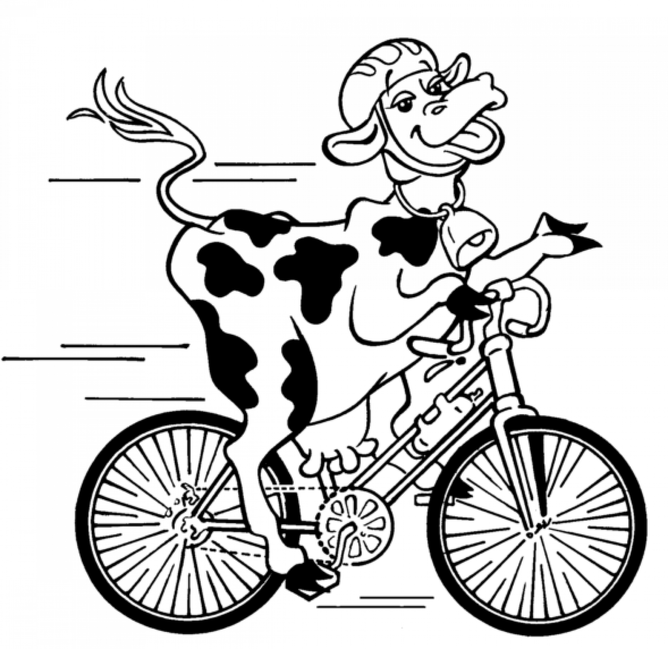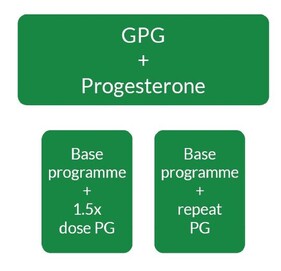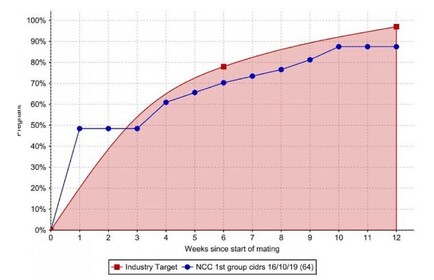Improved conception rates for non-cycler programmes with additional prostaglandin. Dairy cows that have not shown a heat prior to the planned start of mating have improved reproductive results when treated with a 10 day program involving progesterone (CIDR), GnRH, prostaglandin (PG) and eCG.
This programme has formed the basis of our non-cycler treatment program since the ban of oestradiol benzoate in dairy cows in 2007. We have been achieving good conception rates to this program with an average of 45% of treated cows conceiving to the program, and getting them in calf approximately 10-14 days earlier than if they were left untreated.
Recent New Zealand trial work has shown that repeat dosing, or increasing the amount of prostaglandin (PG) can provide an additional benefit to in-calf rates in our current non-cycler and synchrony programs. The purpose of the PG in these programs is to get rid of a corpus luteum (CL) from the ovary. If a corpus luteum is not removed by the PG and remains on the ovary then the cow will not be ready to be mated at the end of the program. The additional dose, or increased volume of PG increases the percentage of cows in the program that will lose their CL, resulting in more cows that are ready to come on heat, or be fixed time AId and the end of the program.
Our current 10 day program uses a 2ml dose of PG at the time of CIDR device removal (day 7 of the program).
The new options for PG dosing include:
- A repeat 2ml dose of PG on day 8 of the program
- A higher dose (3ml) of PG time of CIDR removal
In New Zealand trials the repeat 2ml dose of PG gave an average of a 5.3% increase in 1st service conception rate when compared to the standard single 2ml PG dose. The 3ml dose of PG gave a 4% improvement in 4 week pregnancy rate.
The 3ml dose is done at the same time as CIDR removal, so it doesn’t require an extra visit, but the improvements were not as significant. The repeat 2ml dose gave better results but does have the disadvantage of requiring an extra visit.
Last year many of our herds tried these modifications to the standard non-cycler program with good success. We recorded results from all herds that had adequate recording and scanning information and collated data from over 80 groups of treated cows. Whilst we didn’t quite have enough data for statistical purposes we had very positive results. We found that most who tried the repeat dose of PG on day 8 didn’t find the extra visit to be too much of a barrier. Many farms chose to keep the treated cows separate from the time of CIDR pull (day 7), to fixed time AI (day 10) to save additional drafting.
Here is just one example of many farms that used the new program successfully last year.
Case study:
550 cow herd. Larger Friesian cows. This herd has traditionally had poorer conception rates to CIDR programs (ranging from 30-35% over the last 4 years). They have also struggled with natural conception rates in the herd. Last season we added a repeat 2ml dose of PG to their non-cycler program and achieved a 49% hold to their CIDR program. Impressively the conception rate to their CIDRs matched their overall 1st service conception rate for the herd, and the 6 week in calf rate of the CIDR group was higher than the herd. This is an exceptional result for non-cycling cows!
Key messages:
- Treating non-cyclers is better than doing nothing.
- The standard program has good results with an average of 45% hold to the CIDR program.
- Additional PG has been shown to improve the results further.
- Discuss options with your KeyVet to decide on the best program for your individual farm.
- Bianca MacKintosh




